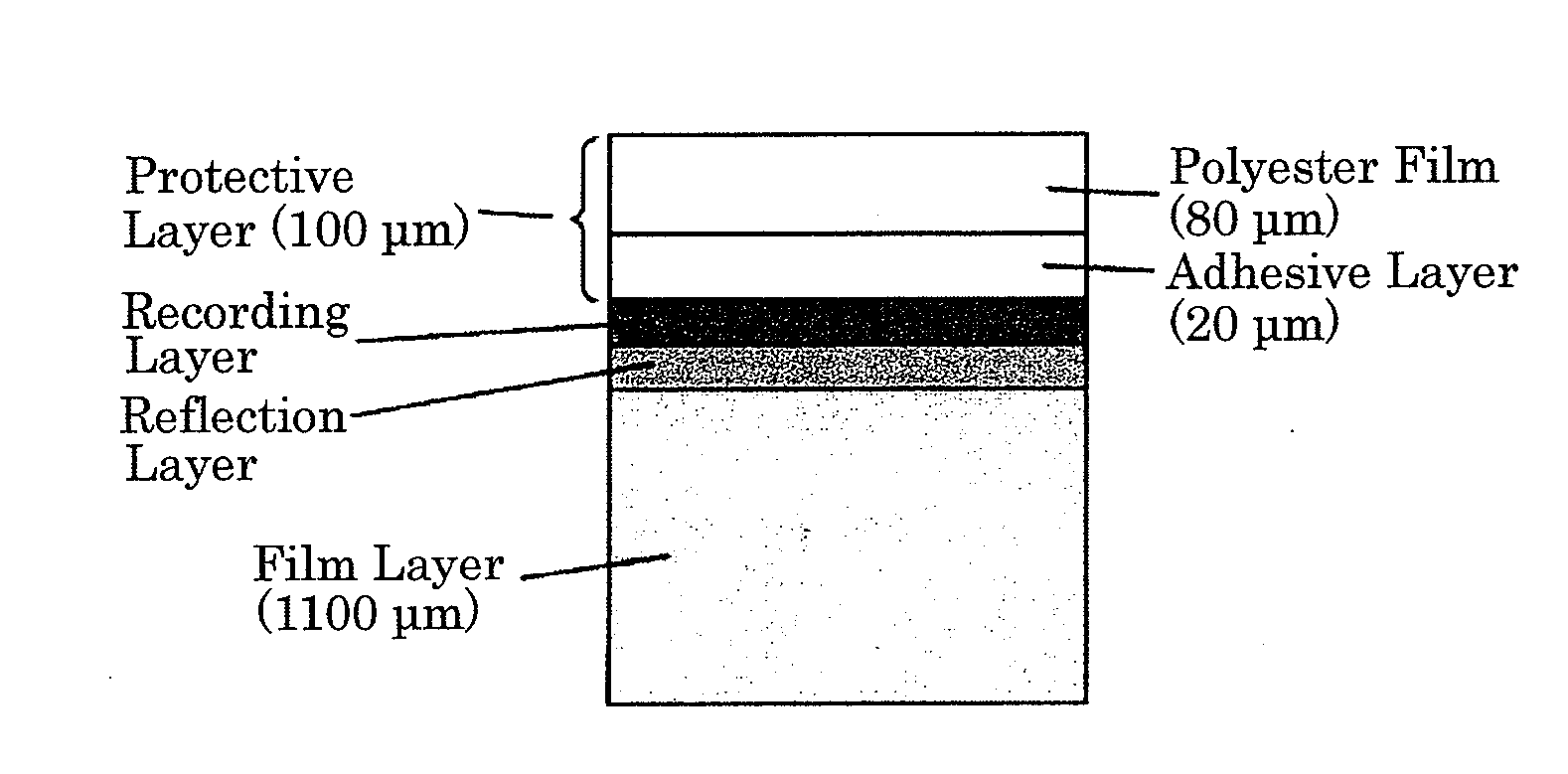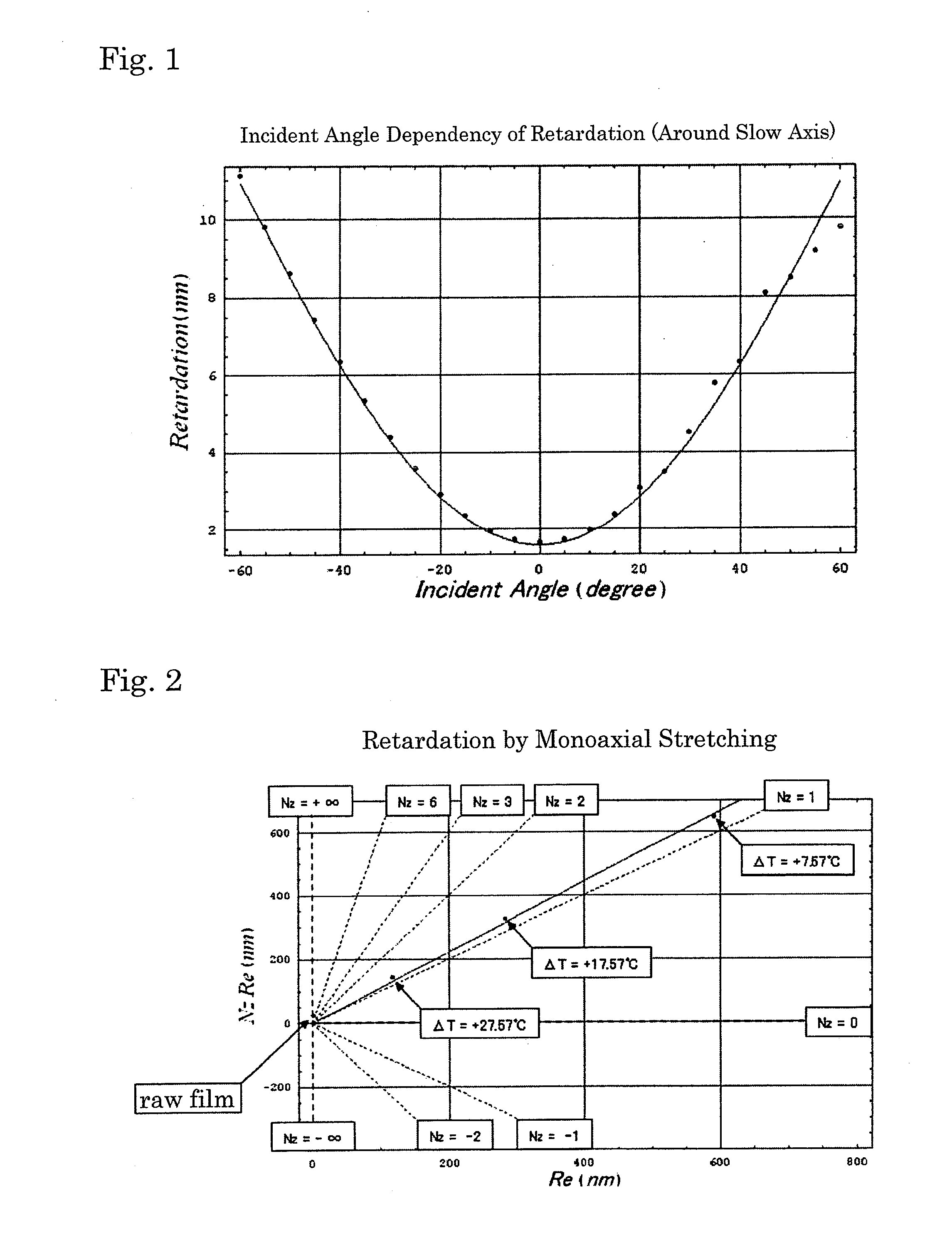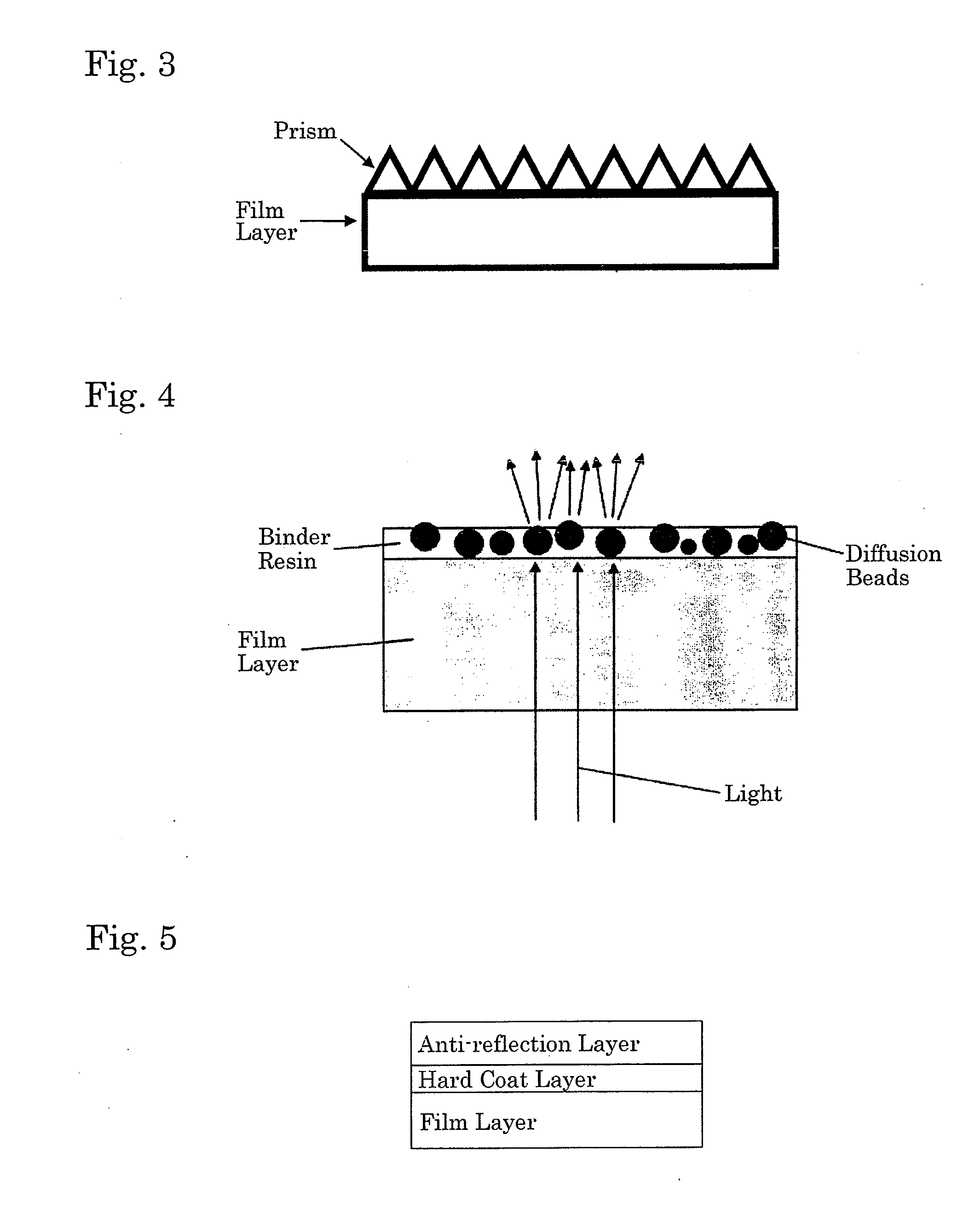Polyester film, process for producing the same and use thereof
a technology of polypropylene and polyethylene, applied in the field of polypropylene films, can solve the problems of film price, high production cost, and deterioration of casting methods in productivity,
- Summary
- Abstract
- Description
- Claims
- Application Information
AI Technical Summary
Benefits of technology
Problems solved by technology
Method used
Image
Examples
examples
[0170]The present invention will be described in more detail with reference to the following examples. However, these examples are only illustrative and not intended to limit the invention thereto.
[0171]Various properties of the polyesters used in the following Examples and Comparative Examples were evaluated by the following methods.
(1) Content of Cyclic Acetal Skeleton-Containing Diol Unit
[0172]Calculated from the results of 1H-NMR measurement. The measurement was conducted at 400 MHz using a measuring apparatus “JNM-AL400” available from JEOL, Ltd. In the measurement, heavy chloroform was used as a solvent.
(2) Glass Transition Temperature
[0173]Using “DSC / TA-50WS” available from Shimadzu Corporation, a DSC curve was obtained by heating about 10 mg of a sample in an aluminum unsealed container at a temperature rise rate of 20° C. / min under a nitrogen gas flow (30 mL / min). The temperature at the mid-point of the difference between the base lines before and after transition was taken...
production examples 1-4
Production of Polyester
[0183]A 150-L polyester production apparatus equipped with a packing fractionating tower, a partial condenser, a total condenser, a cold trap, an agitator, a heater and a nitrogen inlet tube was charged with raw monomers shown in Table 1. The raw monomers were heated to 215° C. under a nitrogen atmosphere in the presence of manganese acetate tetrahydrate in an amount of 0.03 mol % on the basis of a dicarboxylic acid component, to subject the monomers to a transesterification reaction. After the conversion of the dicarboxylic acid component reached 90% or more, antimony (III) oxide and trimethyl phosphate were added to the reaction mixture in amounts of 0.02 mol % and 0.06 mol %, respectively, on the basis of the dicarboxylic acid component. The mixture was gradually heated while reducing the pressure and finally subjected to a polycondensation reaction at 270° C. under 0.1 kPa. At the time at which the melt viscosity of the reactant reached an adequate value, ...
examples 1-4
Production of Polyester Film
[0187]Using a film forming apparatus constituted from a vacuum-vented single-screw extruder (screw diameter: 32 mmφ) fitted with a leaf disk-type polymer filter (mesh size: 5 μm; diameter: 4 in; 8 sheets) and a 300 mm-width coat hanger T-die, a cooling roll (capable of controlling the temperature by a heating medium), a take-up roll and a winding machine (capable of controlling the tension), the polyesters obtained in Production Examples 1 to 4 were respectively extruded into films having a thickness of about 100 μm under the following conditions: an extruder cylinder temperature of 250° C., a polymer filter temperature of 250° C., a T-die temperature of 250° C., a cooling roll temperature of 81 to 88° C., a T-die lip opening of 0.7 mm, an air gap of 20 mm, a discharge rate of 9 kg / h, a screw rotation of 55 rpm and a take-up speed of 4 m / min. The evaluation results are shown in Table 2.
PUM
| Property | Measurement | Unit |
|---|---|---|
| glass transition temperature | aaaaa | aaaaa |
| glass transition temperature | aaaaa | aaaaa |
| temperature | aaaaa | aaaaa |
Abstract
Description
Claims
Application Information
 Login to View More
Login to View More - R&D
- Intellectual Property
- Life Sciences
- Materials
- Tech Scout
- Unparalleled Data Quality
- Higher Quality Content
- 60% Fewer Hallucinations
Browse by: Latest US Patents, China's latest patents, Technical Efficacy Thesaurus, Application Domain, Technology Topic, Popular Technical Reports.
© 2025 PatSnap. All rights reserved.Legal|Privacy policy|Modern Slavery Act Transparency Statement|Sitemap|About US| Contact US: help@patsnap.com



